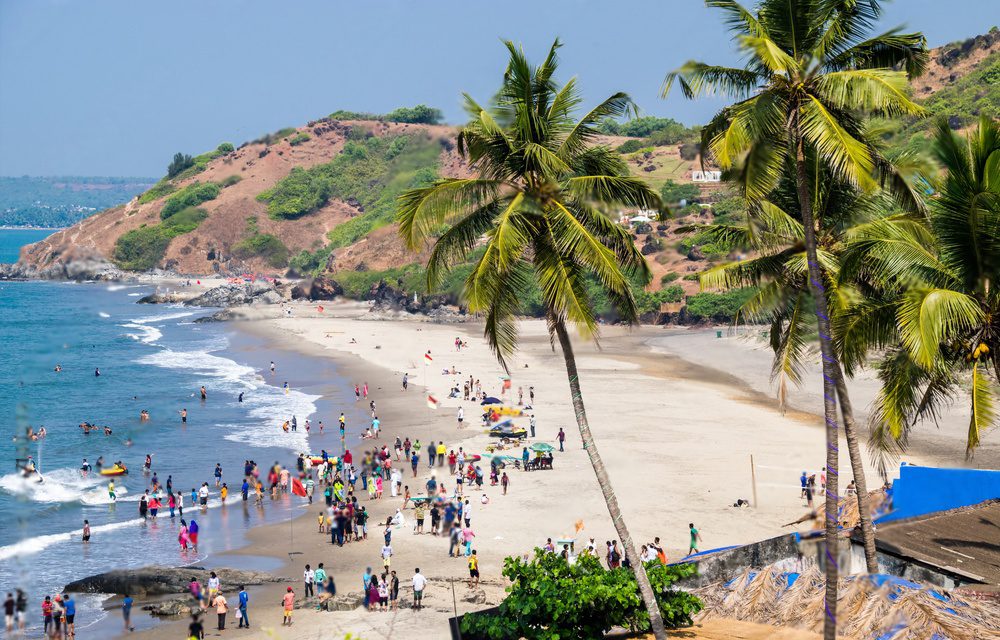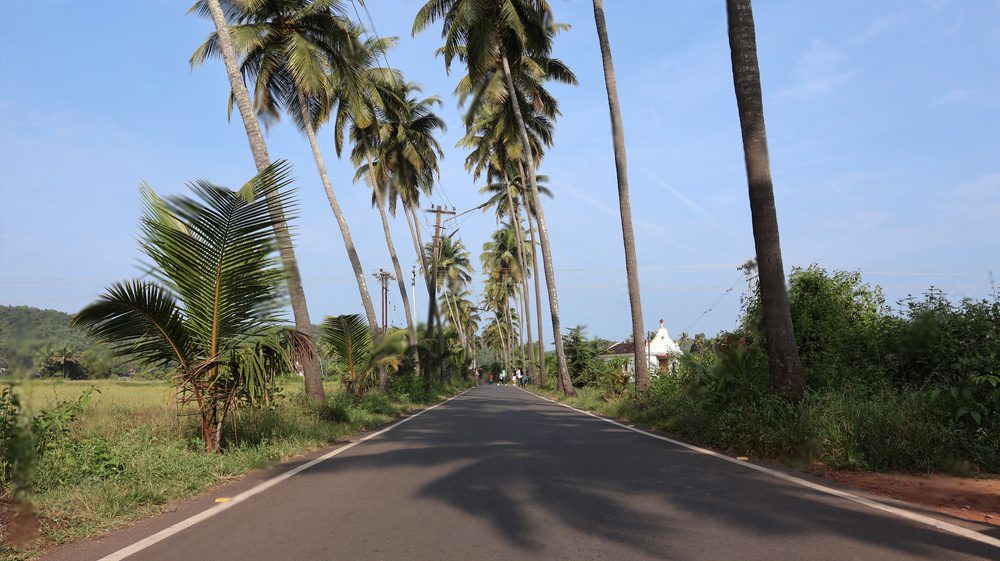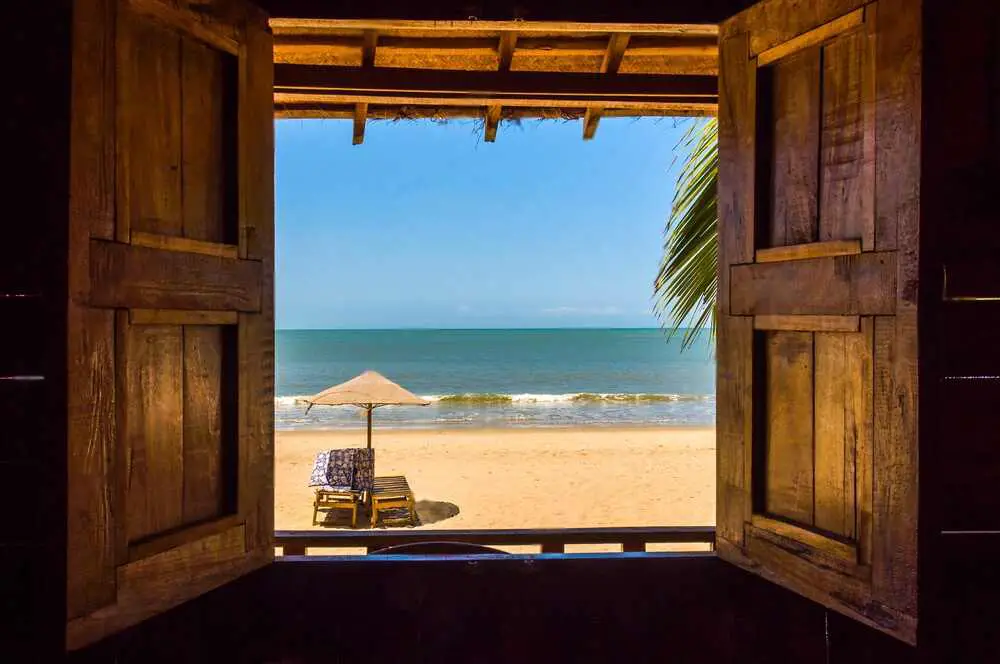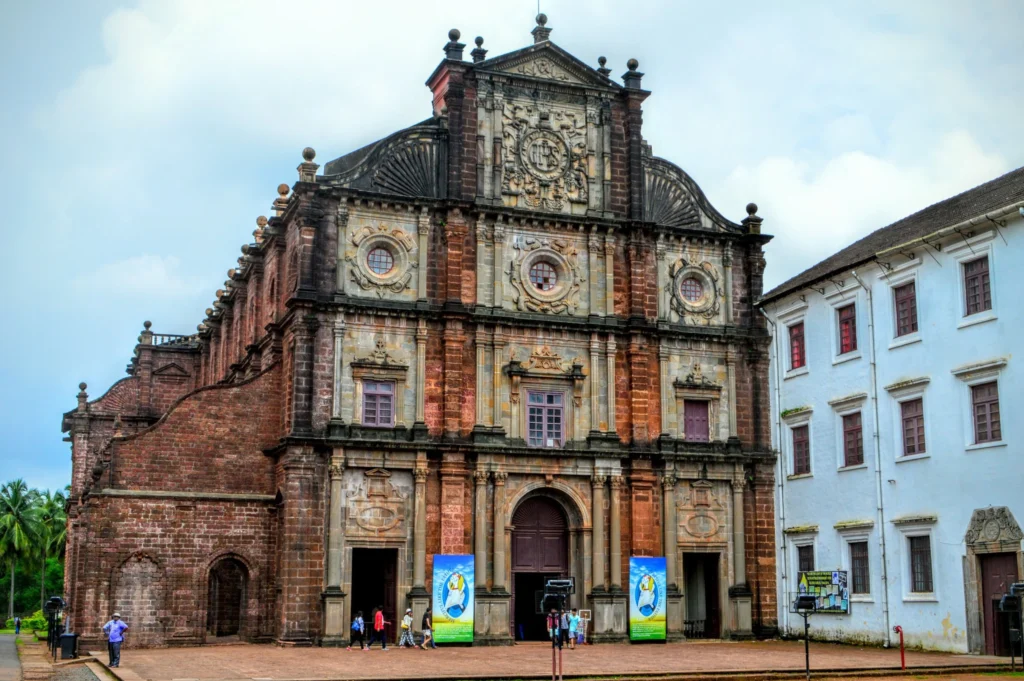In central India, the Sanchi Stupa stands as a powerful symbol of the country’s ancient Buddhist heritage. This UNESCO World Heritage Site, located in Madhya Pradesh, is one of the oldest stone structures in India and a significant landmark in Buddhist history. Emperor Ashoka, who reigned in the 3rd century BCE, commissioned its construction. For centuries, Sanchi Stupa has served as a pilgrimage destination for Buddhists and a place of immense historical and architectural importance.
The stupa is celebrated for its exquisite stone carvings, intricate gateways, and its hemispherical dome, which evokes the enlightened mind of the Buddha. As you explore the complex, a sense of serenity and spiritual significance washes over you, the same aura that has captivated visitors for generations.
How to reach:
Air:
- The closest airport is Raja Bhoj Airport in Bhopal, roughly 55 kilometers away. Bhopal boasts connections to major Indian cities like Delhi, Mumbai, and Bangalore. Taxis and buses are available at the airport to take you to Sanchi.
Train:
- While Sanchi has its own station near the stupa, train options are limited. A better approach might be to travel by train to Bhopal Junction, a major railway hub with connections to Delhi, Mumbai, Chennai, and Kolkata. This station is about 46 kilometers from Sanchi, accessible by road.
Road:
- Sanchi offers good road connectivity, making it reachable by car or bus. Popular routes include:
- Bhopal: Around 46 kilometers away. Take National Highway 46 (NH 46) for a one-hour journey.
- Vidisha: Roughly 10 kilometers distant. Reach Sanchi in 20 minutes via Sanchi Road.
- Regular state-run and private buses connect Sanchi to nearby cities, providing an affordable and convenient option.
Getting Around Sanchi:
- The stupa and other attractions are within walking distance, allowing exploration on foot. Additionally, auto-rickshaws and cycle rickshaws are available for short trips within the town.
Best time to visit:
Weather (October – March):
Winter offers the most comfortable conditions for exploring Sanchi Stupa. With temperatures ranging from 10°C to 25°C, you can navigate the site and surrounding areas with ease. This period also coincides with local festivals and cultural events, enriching your visit. Clear skies and crisp air provide ideal lighting for capturing stunning photos of the intricate monument.
Summers (April – June):
Sanchi experiences significant heat during summer, with temperatures reaching up to 40°C. While crowds are smaller, the intense heat can make sightseeing difficult. If a summer visit is unavoidable, plan your exploration for cooler mornings or evenings. Sun protection, hydration, and light, breathable clothing are essential for a comfortable experience.
Monsoon (July – September):
Moderate rainfall characterizes Sanchi’s monsoon season, with temperatures between 25°C and 30°C. The rain creates a vibrant, green landscape, offering a fresh perspective of the stupa. However, heavy downpours can disrupt travel plans, so checking weather forecasts beforehand is crucial. Be prepared for occasional showers and enjoy the serene, verdant atmosphere if you visit during this period.
Attractions:
Stupa 1, 2 and 3:
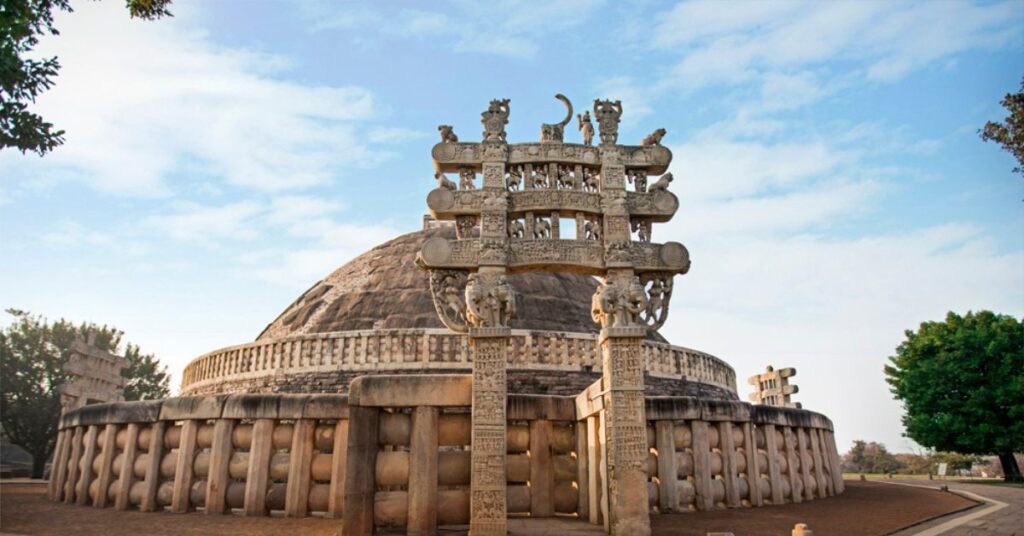

In the heart of India, the Sanchi stupas stand as a magnificent testament to the artistic and spiritual zenith of ancient Buddhism. The complex centers around the Great Stupa, or Stupa No. 1, commissioned by Emperor Ashoka in the 3rd century BCE. This awe-inspiring hemispherical dome symbolizes the Buddha’s enlightenment. Imagine its powerful form, a silent testament to spiritual awakening! Four intricately carved gateways, like portals to the past, unfold scenes from the Buddha’s life and the Jataka tales, offering a glimpse into his previous journeys.
Descending to a lower terrace, we encounter Stupa No. 2. Here, the detailed stone railings captivate the eye with their Jataka tale carvings. Each intricate etching whispers of the Buddha’s past lives, offering profound insights into Buddhist teachings and the virtues he championed.
Ashoka Pillar:
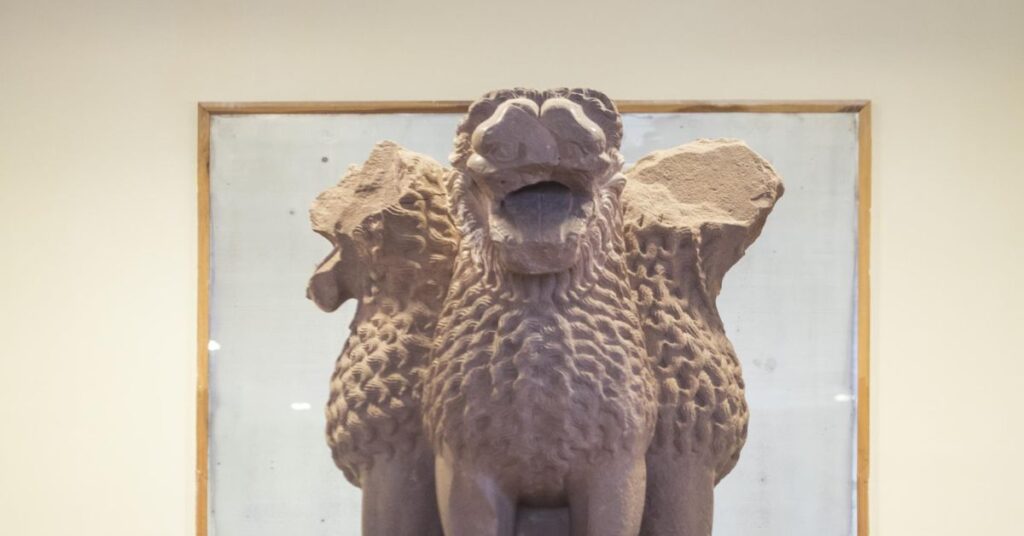

Standing sentinel near the southern gateway of the Sanchi Stupa, the Ashoka Pillar is a powerful reminder of the grandeur of Emperor Ashoka’s reign. This exquisitely polished sandstone pillar embodies the artistic mastery of ancient India. Though its crowning glory – a capital adorned with four lions, mirroring the one at Sarnath that graces India’s national emblem – is lost to time, the pillar’s strength endures.
Etched onto the shaft are Ashoka’s edicts, inscribed in the ancient Brahmi script. These pronouncements speak volumes, not just about the emperor’s policies, but also about his deep commitment to Dhamma, the concept of righteousness that he strived to instill across his vast empire.
Eastern Gateway (Torana):
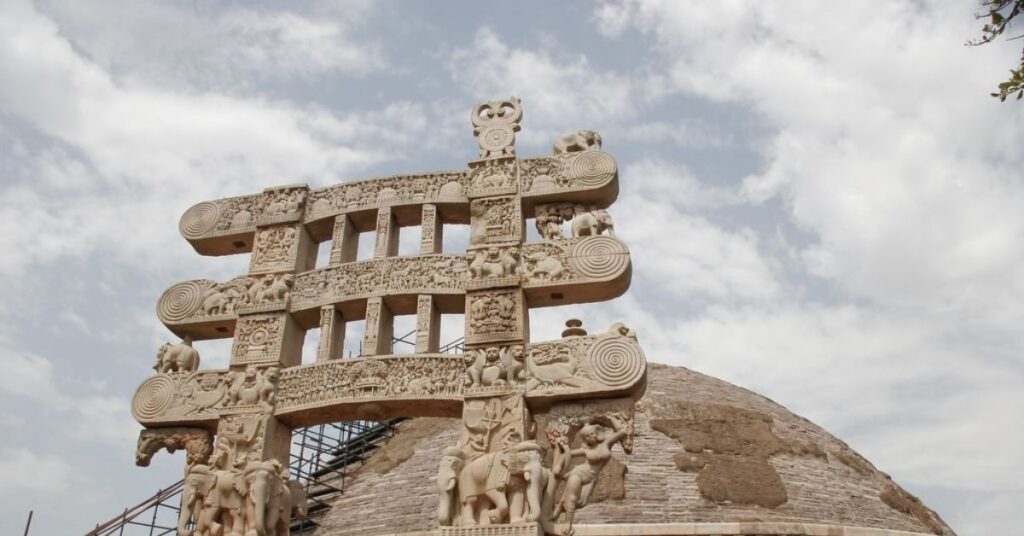

Among the four grand entrances that frame the Great Stupa at Sanchi, the Eastern Gateway stands out as a crown jewel. Unlike a simple doorway, it’s a captivating tapestry carved in stone, meticulously detailing the life of the Buddha. Each panel unfolds like a chapter, from the miraculous birth of the Buddha to his life-altering renunciation of worldly possessions and his ultimate enlightenment beneath the Bodhi tree. The artistry extends beyond mere depiction – scenes of Buddha’s miracles come alive, infusing the gateway with a spiritual energy.
Western Gateway (Torana):
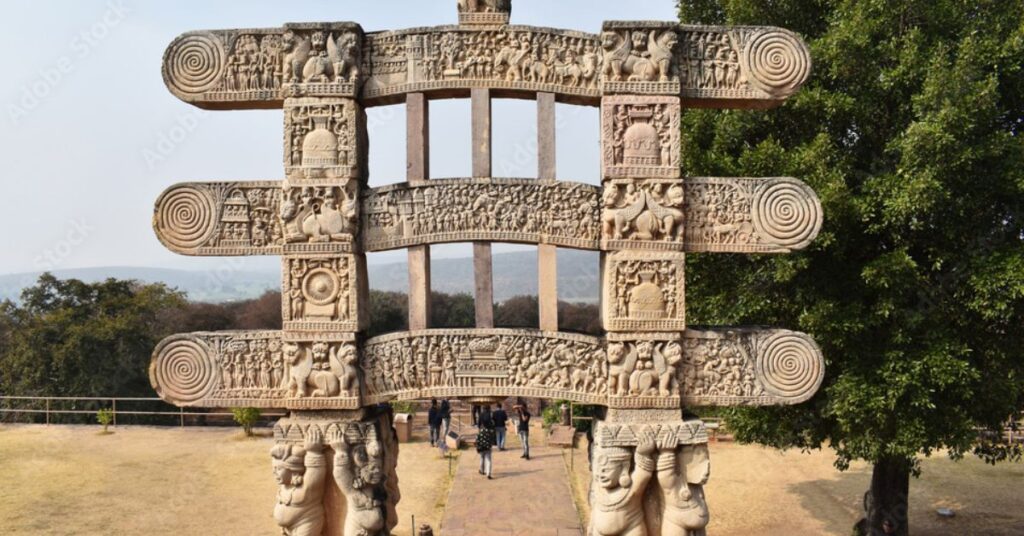

Facing west, another exquisite gateway guards the Sanchi Stupa. Like its counterparts, it’s a masterpiece sculpted in stone, narrating the life of the Buddha and his past incarnations through the Jataka tales. But the Western Gateway takes it a step further. Its carvings are renowned for their detail and expressiveness, bringing to life not just major events, but also the Buddha’s teachings and miracles.
A particularly striking panel depicts the Buddha’s very first sermon at Sarnath, where he set the “Wheel of Dharma” in motion, symbolizing the spread of his teachings. Look closely, and you’ll find nature woven into the narrative – intricate portrayals of trees, animals, and even celestial beings. These details add not just beauty, but layers of symbolism to the gateway.
Sanchi Museum:
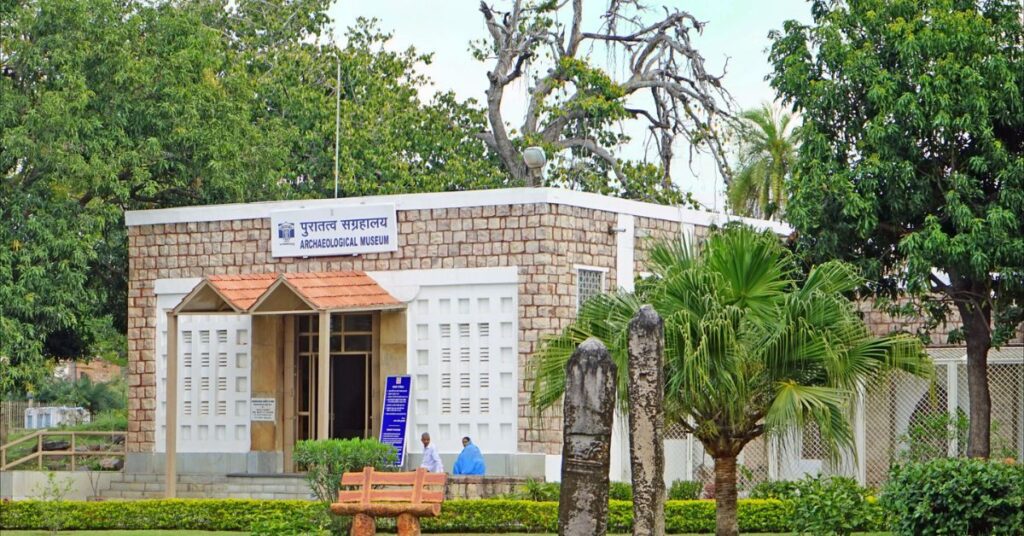

No visit to Sanchi is complete without stepping into the Sanchi Museum, managed by the Archaeological Survey of India. Nestled near the entrance, this museum acts as a treasure trove, offering a deeper understanding of the site’s history and artistic legacy. Inside, a curated collection of artifacts, sculptures, and relics, unearthed from Sanchi and nearby areas, awaits. These include intricate stone carvings, pottery pieces, metal objects, and even coins. Each piece serves as a window into the lives and times of the ancient Buddhist community that once flourished here.
Local Experiences:
Explore the intricate details and historical significance: Uncover the Sanchi stupas with a knowledgeable guide. Learn about the carvings, architecture, and stories depicted on Stupa No. 1, Stupa No. 2, and Stupa No. 3.
Find serenity with meditation sessions: Participate in meditation sessions conducted by local Buddhist monks and immerse yourself in a serene environment for spiritual reflection.
Immerse yourself in local culture: Witness the rich cultural heritage of Madhya Pradesh by attending traditional dance and music performances in nearby villages.
Shop for local crafts: Take home a piece of Sanchi’s artistry by visiting local markets to purchase handcrafted souvenirs like intricately designed stone carvings, traditional textiles, and handmade jewelry.
Savor the local cuisine: Indulge in a culinary adventure by trying regional specialties like poha, jalebi, and bhutte ka kees at nearby eateries.
Unveil the past at the Archaeological Museum: Spend time at the Sanchi Museum to view artifacts, sculptures, and relics excavated from the site and gain a deeper understanding of the historical context of the Sanchi stupas.
Explore the Udayagiri Caves: Take a short trip to the Udayagiri Caves to see rock-cut caves and sculptures from the Gupta period, including the impressive figure of Vishnu in his Varaha avatar.
Experience village life on a guided walk: Engage in guided walks through nearby villages to experience rural life firsthand, interact with local residents, and learn about traditional farming and crafts.
Capture the beauty with photography tours: Join photography tours led by professional photographers to learn how to capture the architectural beauty and intricate details of the stupas and surrounding landscape.
Travel tips:
- Getting Around: Explore Sanchi easily with auto-rickshaws and cycle rickshaws. Taxis are also available for a more comfortable ride.
- Accommodation: Choose from guesthouses, budget hotels, or mid-range hotels in and around Sanchi. Book in advance, especially during peak season.
- What to Pack: Pack comfortable, lightweight clothes for warm weather. Bring some warm layers for cooler evenings in winter. Wear sturdy walking shoes for exploring the sites.
- Sun Safety: Don’t forget sunscreen, sunglasses, and a hat, especially during the hot midday sun.
- Stay Hydrated: Carry a water bottle as there might be limited options within the complex.
- Respect the Site: Remember, Sanchi is a UNESCO World Heritage Site. Respect the monuments by not touching or climbing on them. Follow all guidelines from the authorities.
- Local Food: Sample the delicious local cuisine, but ensure you choose eateries with fresh food preparation.
- Capture Memories: Photography is allowed, but be mindful of restricted areas. Bring a good camera to capture the intricate carvings.
- Enhance Your Experience: Consider hiring a local guide for in-depth historical and cultural insights. Audio guides are also available.
- Cash is King: While some places accept cards, carry cash for local markets and smaller establishments.
- Museum Visit: Delve deeper into Sanchi’s history with a visit to the Sanchi Museum. Plan your visit for the beginning or end of your trip for a well-rounded experience.
Conclusion
A UNESCO World Heritage Site, Sanchi promises a journey through time, unveiling the rich spiritual and artistic heritage of ancient India. Explore the magnificent stupas, particularly the Great Stupa, standing as testaments to the architectural advancements during Emperor Ashoka’s reign. Intricate carvings narrate the life and teachings of the Buddha, offering both visual delight and a chance to connect with Buddhist philosophy. For a deeper experience, consider guided tours, meditation sessions, and cultural performances. Plan your exploration with Xplro.com to ensure a smooth and unforgettable visit to Sanchi.
FAQs
1. When is the suggested time to visit Sanchi?
- The ideal time to visit Sanchi is from October to March when the weather is pleasant and conducive to exploring the outdoor monuments.
2. How can I reach Sanchi?
- This place is accessible by air, train, and road. The nearest airport is in Bhopal, 55 km away, while the closest railway station is in Vidisha, about 10 km away. You can easily find buses and taxis from both Bhopal and Vidisha to Sanchi.
3. How much time is needed to explore Sanchi?
- A full day is usually sufficient to visit the main stupas, the Sanchi Museum, and nearby attractions like the Udayagiri Caves.
4. Are there entrance fees for the Sanchi Stupas?
- Yes, there is an entrance fee to visit here Stupas and the Sanchi Museum. The fees vary for Indian and international tourists.
5. What accommodation options are available in Sanchi?
- This placeok7m5y el,tg has several accommodation options, including guesthouses and budget hotels. More extensive lodging options can be found in nearby cities like Vidisha and Bhopal.
6. Can I hire a guide in Sanchi?
- Yes, you can hire local guides at the entrance of the archaeological site. They provide valuable historical insights and enhance the overall experience.
7. What should I wear when visiting Sanchi?
- Wear comfortable, lightweight clothing suitable for warm weather during the day. If visiting in winter, bring some warm clothes for the cooler evenings. Comfortable walking shoes are also recommended.
8. Are there dining options near Sanchi?
- There are a few eateries and local restaurants and Vidisha where you can try local cuisine. It’s also a good idea to carry some snacks and water during your visit.
9. Is photography allowed at the Sanchi Stupas?
- Yes, photography is allowed at the Stupas, but be mindful of any signs indicating restricted areas. Bringing a good camera is recommended to capture the detailed carvings.
10. What other attractions are near Sanchi?
- Nearby attractions include the Udayagiri Caves, known for their rock-cut sculptures, and the ancient city of Vidisha, which features historical sites like the Heliodorus Pillar.
11. What facilities are available at the Sanchi Museum?
- The Sanchi Museum houses a collection of artifacts, sculptures, and relics from the site. It offers informative displays about the history and significance of the Sanchi Stupas. The museum also has restrooms and a small shop for souvenirs.
12. Is Sanchi suitable for a family visit?
- Yes, Sanchi is suitable for families. The site is educational and offers a unique cultural experience for visitors of all ages. However, be prepared for a fair amount of walking and ensure young children are supervised around the ancient structures.
